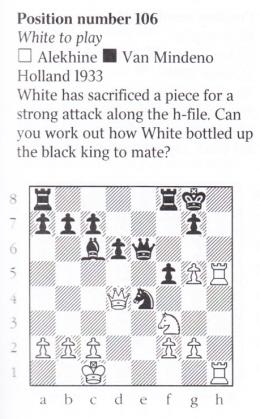
Edward Winter
In chess lore and history there is often an easy/lazy way and a difficult/worthwhile way, and this is illustrated by an Alekhine position indirectly referred to in C.N. 8116. From page 33 of The Times Winning Moves by R. Keene and B. Jacobs (London, 2003):

The solution on page 139:

Nothing could be less toilsome than making such straight use of game 120 in the second volume of Alekhine’s Best Games:
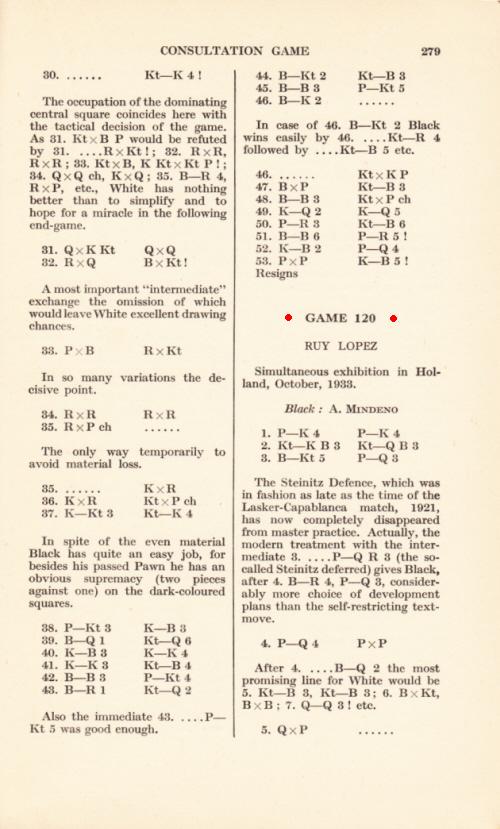
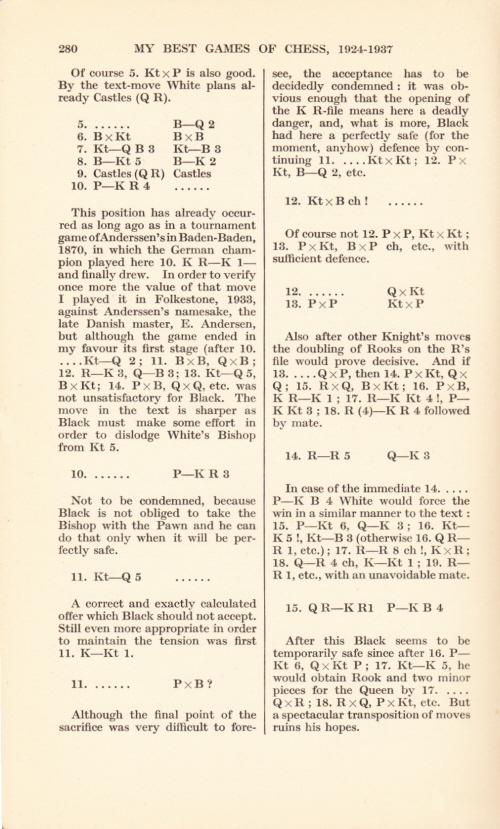
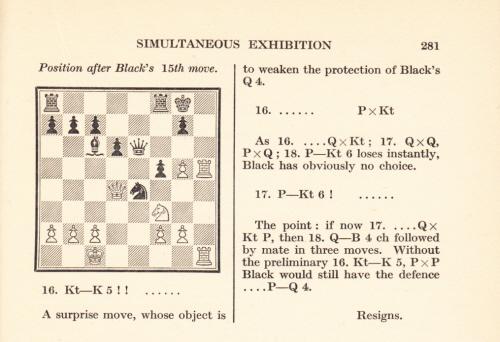
But then there is the difficult/worthwhile way, which entails trying to keep abreast of research, presenting the known facts accurately and endeavouring to establish the truth.
The game was published, with Black unidentified, in a report in the Tijdschrift van den Nederlandschen Schaakbond, November 1933. Below are the relevant parts, from pages 296-297:
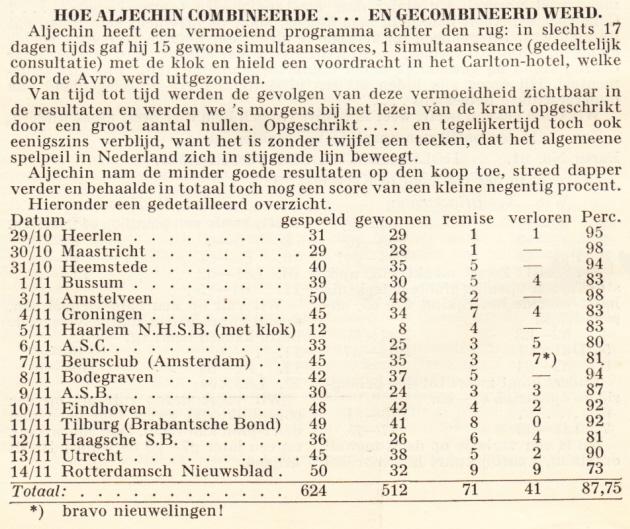
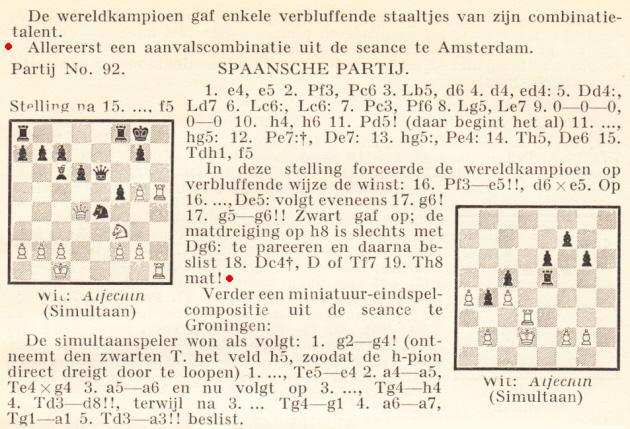
Black was also left anonymous on pages 86-87 of Tarrasch’s Schachzeitung, 15 December 1933:
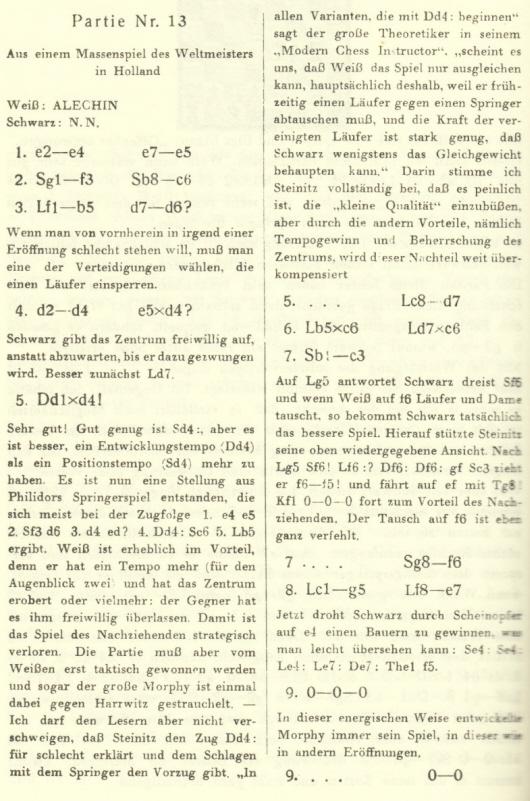
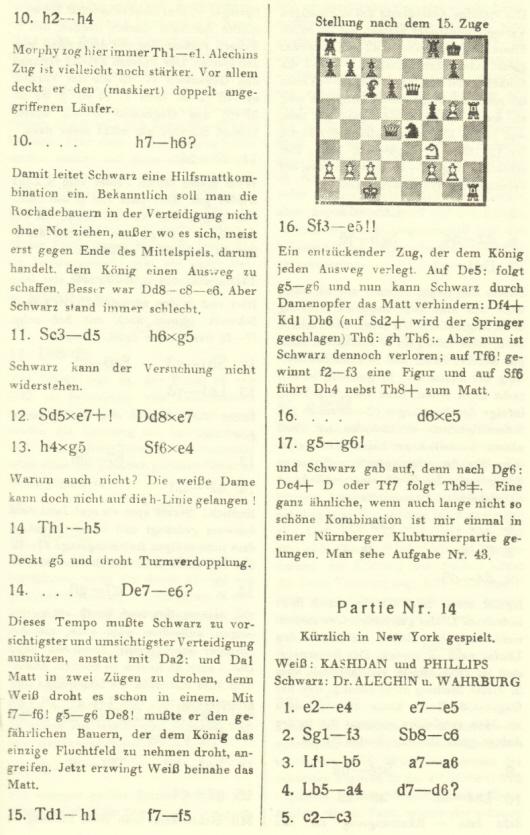
In 1988 (C.N.1544) we asked why Black was named as Hulscher, and not Mindeno, when the game was given (with, moreover, a different move order) on page 152 of the November 1933 American Chess Bulletin:
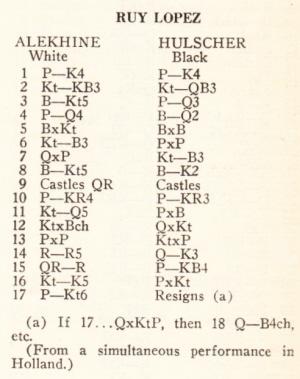
Our question was taken up by Tony Mantia in an article on page 18 of the 22/1992 issue of Inside Chess:
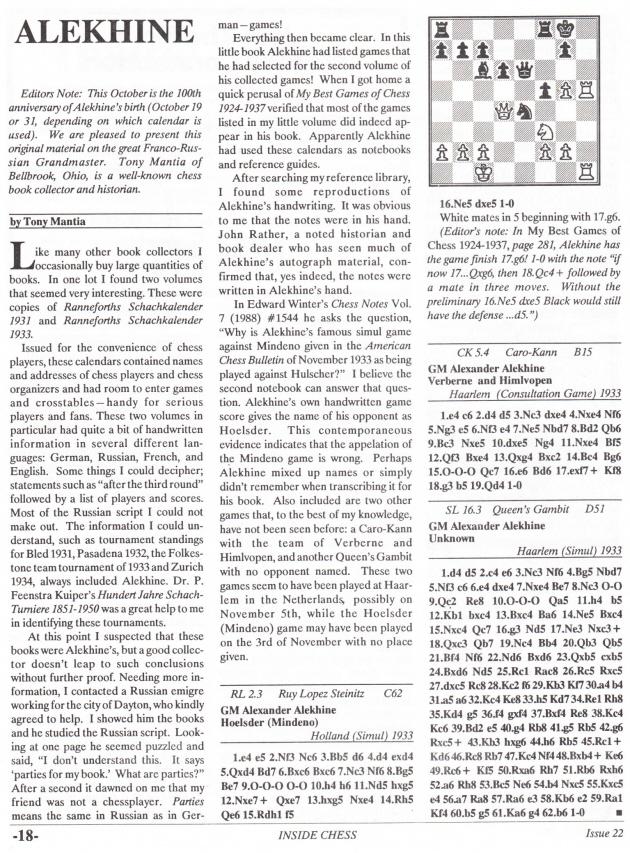
So now there was a third name, Hoelsder. The following comes from pages 90-91 of Alekhine in Europe and Asia by J. Donaldson, N. Minev and Y. Seirawan (Seattle, 1993):
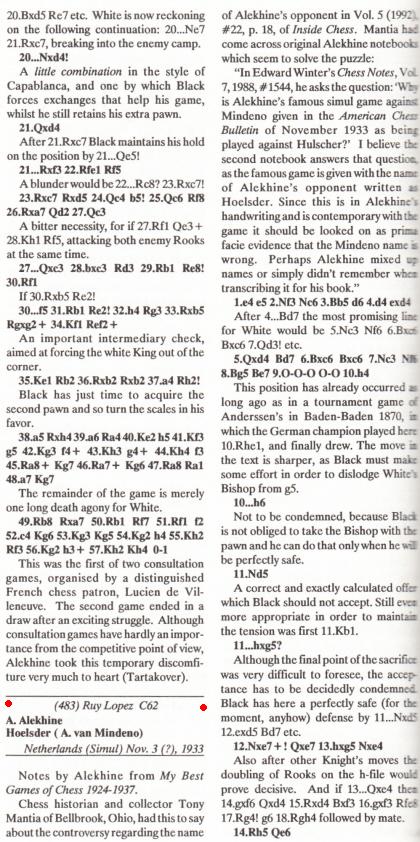

On the other hand, ‘Alekhine-Hulscher’ was given by Leonard M. Skinner and Robert G.P. Verhoeven on page 476 of Alexander Alekhine’s Chess Games, 1902-1946 (Jefferson, 1998), on the grounds that the name Hulscher appeared in the Nieuwe Rotterdamsche Courant, 7 November 1933:
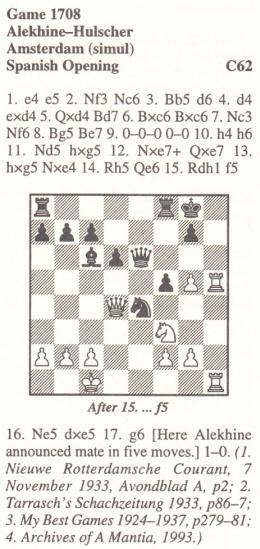
As regards the above reference to ‘Archives of A. Mantia, 1993’, we are grateful to Dr Skinner for sending us a copy of the relevant part of Alekhine’s notebook, and to Mr Mantia for permission to show it here:
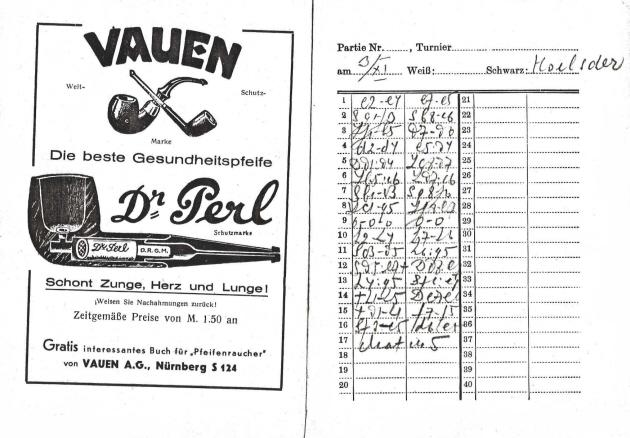
On the analytical front too there are complications, as mentioned in C.N. 1027, which referred to CHESS, August 1975, page 328, and the BCM, February 1983, page 69. Furthermore, the game was discussed by E. Böök on page 82 of the December 1947 CHESS and on page 151 of the March 1948 issue:
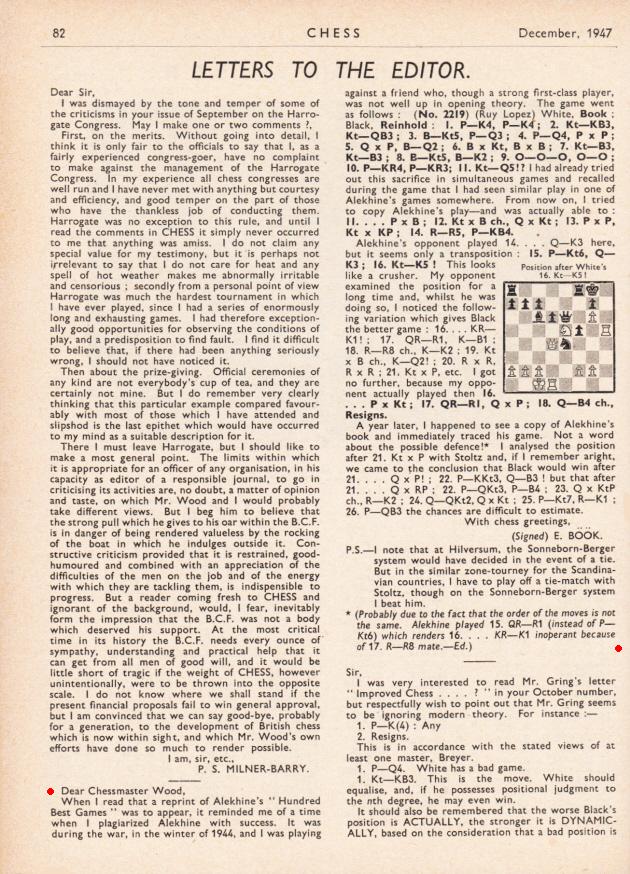
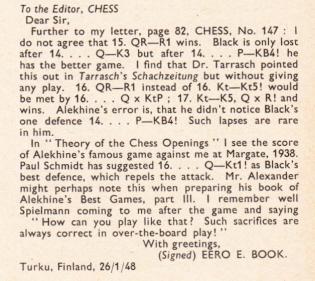
See, however, Tarrasch’s note to 14...Qe6, given earlier in the present item. We add that Böök’s account was discussed on pages 120-122 of The Pleasures of Chess by Assiac (New York, 1952).
At present, no tidy conclusions seem possible about the identity of Alekhine’s opponent, beyond the observation that, for the past two decades, competent writers have not named him unquestioningly as Mindeno.
(8203)
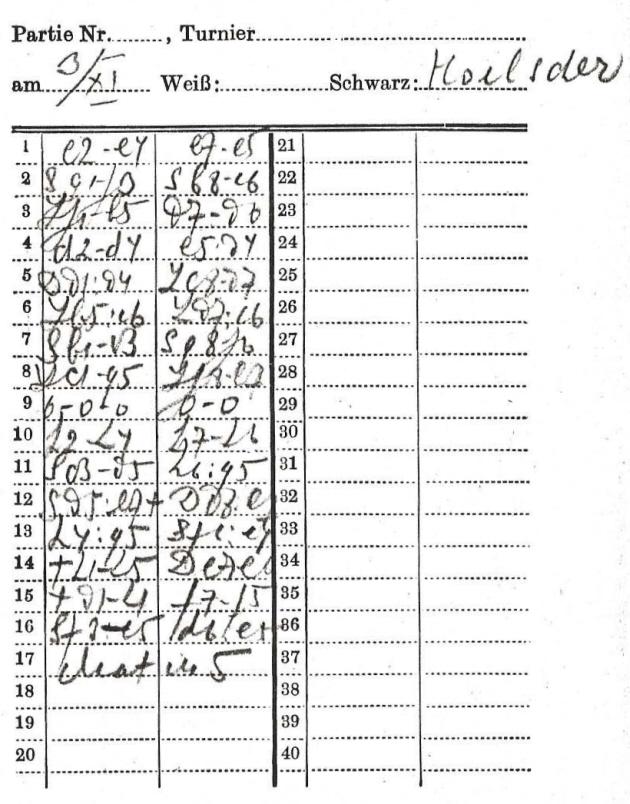
Gene Gnandt (Houston, TX, USA) comments:
‘Concerning the page from Alekhine’s notebook shown in C.N. 8203, the letter d in the handwritten name does not match the letter d in the score-card, e.g. “4 d2-d4”, where the vertical line is much more upright and the lower curve more circular than the oval shape in the name. The oval shape is a closer match to a lower-case c in the score-card. For example, “5...Lc8-d7”.
I therefore suggest that it is a c followed by an h. In the score-card, Alekhine writes his letter h with an almost flat lower line. In fact, it looks like the letter l, e.g. “10 h2-h4 h7-h6”. This matches the letter in the name. I therefore suggest that the letter interpreted as d is really two letters, c and h, which would make the name Hoelscher.’
(8283)
Peter de Jong (De Meern, the Netherlands) and Christian Sánchez (Rosario, Argentina) have found that the game under discussion was given as Alekhine v Hoelscher (with the venue as Amstelveen) by Max Euwe in his column on page 8 of the 20 November 1933 edition of Het Volk:
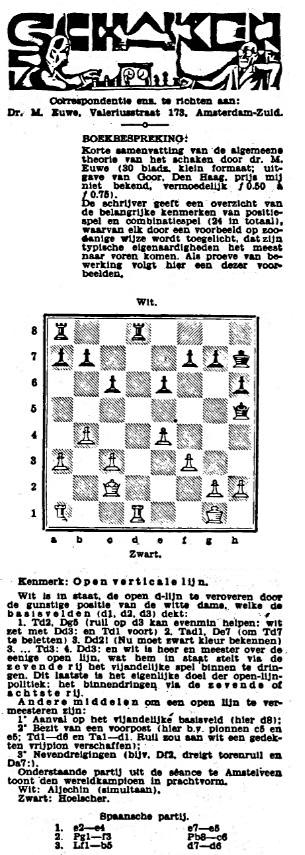
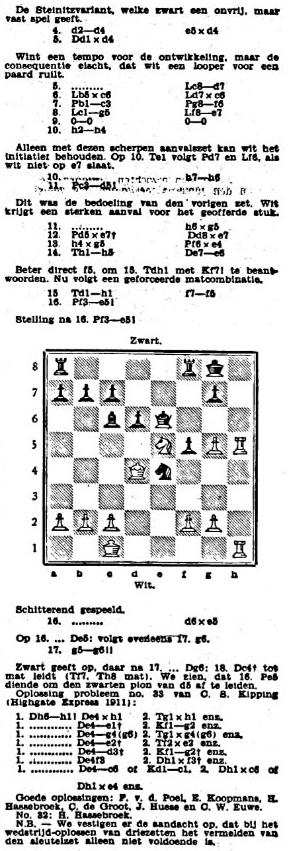
Alekhine’s Amstelveen display took place on 3 November 1933 according to the report in the Tijdschrift van den Nederlandschen Schaakbond, November 1933 (C.N. 8203). In his notebook Alekhine dated the game 3 November.
(8291)
Position 32 in Little book of Chess Secrets by Raymond Keene (Glasgow, 2013), where Germany is inexplicably mentioned:
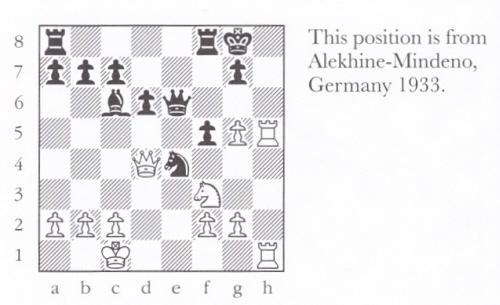
Corrections are one of the few things that Raymond Keene will not copy.
(8396)
Page 386 of part one of Alexander Kotov’s Das Schacherbe Aljechins (East Berlin, 1957) had this footnote to explain the use of ‘Mindeno’ in the game heading:
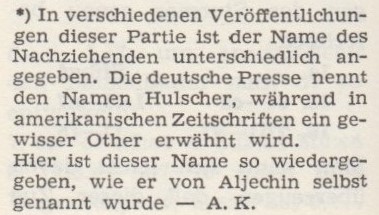
The reference to ‘Other’ was remarked upon on page 357 of CHESS, 17 July 1970.
For detailed annotations to the game see pages 96-97 of Questions of Modern Chess Theory by Isaac Lipnitsky (Glasgow, 2008).
To the Chess Notes main page.
To the Archives for other feature articles.
Copyright: Edward Winter. All rights reserved.